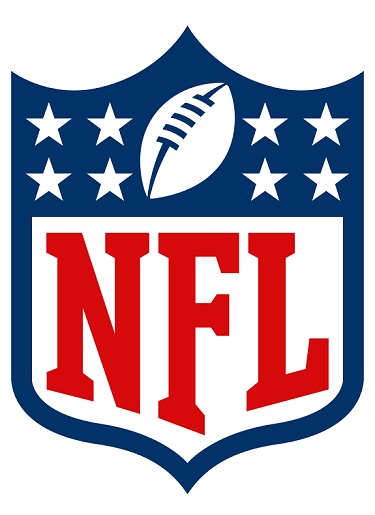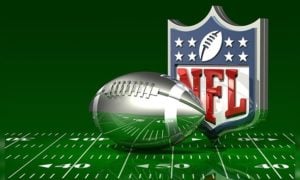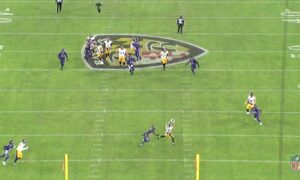Professional Football remains a dangerous game even with the 42 rules the NFL has introduced to enhance player safety since 2002. In fact, the very creation of football as we know it back in 1906 was out of concern for player safety. It literally took then President of the United States, Teddy Roosevelt to intervene due to the rampant number of injuries and deaths.
Roosevelt, whose son played for Harvard during this period had stated that, “I believe in rough games and in rough, manly sports. I do not feel any particular sympathy for the person who gets battered about a good deal so long as it is not fatal.” The problem was that it was a deadly game. 18 deaths in 1904 and so Roosevelt met with the heads of several big college programs (the NFL did not exist, and college football was the big draw). Some voluntary commitments to making the game safer were ineffectual and the 1905 season added another 19 gravestones resulting from what was supposed to be an amateur sport. October 9, 1905: Roosevelt meets with college officials to curb unsportsmanlike conduct in football. Big programs like Columbia, Duke & Northwestern dropped football altogether. Stanford and California switched to rugby. Facing pressure from the President, bad publicity and the loss of prominent programs brought the colleges together to ultimately form the Intercollegiate Athletic Association of the United States which is now the NCAA on March 31, 1906. Rules such as the forward pass were introduced and a requirement that teams would be separated by a neutral zone (the length of the ball) at the line of scrimmage to prevent charging the line head first from several yards out. The length of the game was also shortened from 70 minutes to two 30-minute halves. The number of deaths began to decline and with subsequent rule changes deaths and the most serious injuries like paralysis became sporadic. This was the formation of football as the founders of the NFL in 1920 knew it.
Thankfully, there has only been on the field death in the NFL’s entire history. Detroit Lions wide receiver Chuck Hughes suffered a fatal heart attack while trotting back to a huddle in a game against the Chicago Bears. Hall of Fame linebacker Dick Butkus was reported to be the closest player to him when he fell and waved for help from the sidelines. Sadly, Hughes passed away later at the hospital, the arteries to his heart clogged. Despite the rarity of on the field deaths; there is a hidden injury called chronic traumatic encephalopathy (CTE) that has focused the NFL’s attention on concussions. CTE was brought to popular attention through the movie called ‘Concussion’, which begins with the untimely death and autopsy of all-time Pittsburgh Steelers great Mike Webster and is centered in Pittsburgh along with Dr. Bennet Omalu’s efforts to bring his findings to the attention of the NFL.
The insidious nature of CTE is that, to date, it can only be conclusively diagnosed after death. Its cause is attributed to repeated head injuries. The NFL is tracking the occurrence of injuries including concussions. In 2016 the NFL reports 244 total concussions occurring in practices in game during both the preseason and regular season. This is down from a four-year high of 275 concussions in 2015. A quick perusal of this week’s injury reports showed at least 19 different players including Ramon Foster in various stages of the concussion protocol. Here is a link to the NFL’s 2017 Health & Safety Report. You can download the entire report or scroll through to get various information including the chart that tracks some specific types of player injuries.
The NFL has worked on both an in-game protocol for handling suspected concussions and a return to play protocol once it has been determined that a player has suffered a concussion. During NFL games there is now a tent on the sidelines. If a player receives an impact to the head AND either self-reports or an NFL trainer, coach, team doctor, teammate among others reports a player to be exhibiting symptoms that suggests a possible concussion; a “sideline survey” will be conducted by a team physician or Unaffiliated Neurotrauma Consultant (UNC). This is essentially an initial medical examination to see if there are indeed signs of a concussion. The player is either returned to play or sent to the locker room for a more in-depth examination. Here is a link to the current NFL’s Concussion Game Day Checklist.
Once a player is medically diagnosed to have suffered a concussion; there is a return to play protocol:
It is the five-step process we often hear about. There is no minimum set timeline for a full return from a concussion. The steps are summarized below or go to the link above for details:
- Rest and recovery: Until a player returns to the “baseline level of signs and symptoms and neurological examination,” only limited stretching and balance activities are recommended. Electronics, social media and team meetings are all to be avoided.
- Light aerobic exercise: The NFL recommends 10-20 minutes on a stationary bike or treadmill without resistance training or weight training. The cardiovascular activity is monitored by an athletic trainer to “determine if there are any recurrent concussion signs or symptoms.”
- Continued aerobic exercise and introduction of strength training: Increased duration and intensity of aerobic exercise with strength training added. An athletic trainer will supervise to watch for recurrent concussions signs or symptoms.
- Football specific activities: The cognitive load of playing football will be added and players will participate in non-contact activities for the typical duration of a full practice.
- Full football activity/clearance: A player returns to full participation in practice, including contact without restriction. This requires agreement between the team physician and an independent neurological consultant assigned to the team that the concussion has been resolved.
These protocols are an evolving process. The NFL instituted the most recent protocols in June 2017. It would not be surprising to see changes as the medical community learns more about concussions and CTE. Matthew Marczi wrote an article on Houston Texans Tom Savage who was placed on injured reserve after suffering a concussion. Back in 2012, the NFL started placing independent certified athletic trainers (ATC) to spot injuries after Cleveland Browns then quarterback Colt McCoy suffered a concussion from a helmet to helmet hit in a game against the Steelers. You may recall that play and the player that applied the hit. James Harrison who was just waived by the Steelers. The Browns trainers claimed that they did not see the blow since they were busy tending to other players and were not informed by anyone of his injury. The role of the NFL ATC spotters is observing play on the field and video of the game to identify players who may potentially be injured on a play, with an emphasis on concussions and other head and neck injuries. Obviously, the system needs improvement as the Seattle Seahawks were just fined $100,000 for not properly applying the concussion protocol after Russell Wilson missed just one play after taking a hit to the head earlier this season.
Rugby is another sport that is dealing with the issue of head injuries. While there is no blocking in rugby; it is a full contact tackle sport with minimal safety equipment. No hard-shell helmets or big shoulder pads. Here is an example of some rugby tackles. Most of these are legal under Rugby laws and perhaps tame compared to football hits but very few head to head shots in this game which is played with two 40-minute halves with just seven substitutions allowed meaning that at least eight players on each team are expected to play the entire 80 minutes with no break.
World Rugby is the governing body for Union Rugby. All union rugby played in the USA whether at the youth, college, women’s, men’s or the national level follow the same laws as established by World Rugby. A little different than football where each organization: NFL, NCAA, high schools etc. establish their own rulebook. So High School rugby players in the USA can play High School players in Portugal and be refereed by a Frenchman but play by the same laws. When those kids go to college; the players may be bigger & faster, but they are playing to the same set of laws. Even at the highest professional and representative National teams around the world; the set of laws they play by are the same set I use to coach a high school team here in Maryland.
Rugby has instituted an in-game protocol when a concussion is suspected but I want to highlight a major difference with rugby’s graduated return to play program and the NFL’s return to play protocol. Here is World Rugby’s concussion guidance for the wonks. While both have a first stage that calls for rest and recovery; the NFL has no set timeline. A player can be cleared in hours if all symptoms are cleared and they meet baseline tests. Rugby mandates a one-week minimum physical rest period including an initial 24-hours of complete rest before starting the Graduated Return to Play Program. A rugby player who is receiving advanced level of concussion care can have the one-week rest period reduced if they receive medical advice that the full week is not necessary but there is no exception to the initial 24-hour period of complete physical and cognitive (e.g. no press interviews or team meetings) rest. Rugby also requires that each stage of the Graduated Return to Play Program be a minimum of 24 hours. Of course, like the NFL; professional rugby players under advanced level of concussion care can be cleared earlier but the difference being that their advice must be noted as an exception to the established guidelines.
Both the NFL and World Rugby will continue to adapt their protocols to address concussions. While it may be difficult for players to self-report or for teams to allow more time in the healing process due to the relatively short seasons; I believe that over time the NFL will have to look at longer rest periods and more time between the rehabilitation stages. The rugby graduated return to play protocols may seem unrealistic for the NFL right now since once diagnosed with a concussion; a player would be out at least one week (two if the first week of rest is not waived by medical staff specializing in concussions) which automatically means missing 1-2 games.
The NFL is Under Pressure to move forthrightly to address this problem. Lives are literally depending on it.








